11 Household Items That Are Literally Poisoning Your Air ( reader’s digest )BY JESSICA MIGALA Follow these steps for pollution preventio
- লিঙ্ক পান
- X
- ইমেল
- অন্যান্য অ্যাপ
11 Household Items That Are Literally Poisoning Your Air
Levels of air pollution indoors can far exceed what's outside. Follow these steps for pollution prevention and your lungs will thank you.
The polluted air in your home
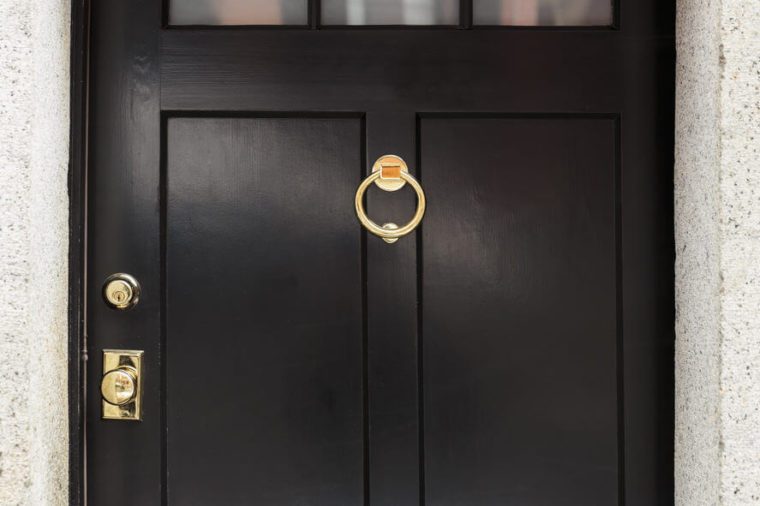 DAVID PAPAZIAN/SHUTTERSTOCK
DAVID PAPAZIAN/SHUTTERSTOCK
People tend to focus on the dangerous particles in the outdoor air—and for good reason: check out what air pollution can do to your body. But the air in your house can be up to five times more polluted than what you're breathing outdoors, according to theEnvironmental Protection Agency. And don't forget you spend up to 90 percent of your time indoors, reports the American Lung Association. That's a lot of exposure to potentially contaminated air.
What's in your air
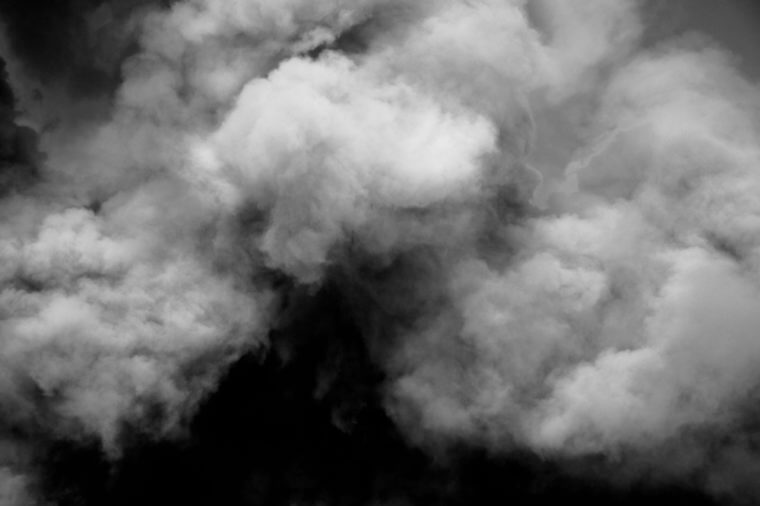 LATTE ART/SHUTTERSTOCK
LATTE ART/SHUTTERSTOCK
Now that energy-efficient buildings keep air leakage to a minimum, there's a big uptick in the concentration of air pollutants, says Ian Colbeck, PhD, professor in the school of biological sciences at the University of Essex. Pollutants that should pique your concern include tobacco smoke, nitrogen dioxide, carbon monoxide, particulate matter agents, formaldehyde, volatile organic compounds (VOCs), and radon, he says.
The risks of indoor air pollutants
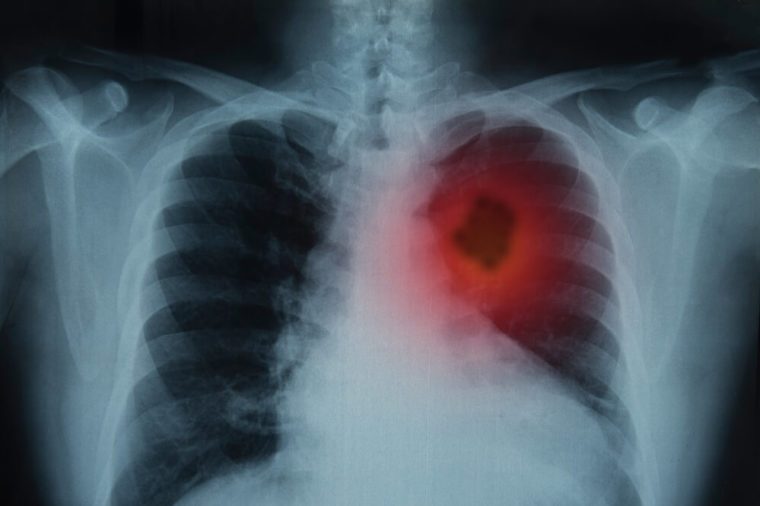 CREATE JOBS 51/SHUTTERSTOCK
CREATE JOBS 51/SHUTTERSTOCK
The sneaky sources of pollution you find indoors can trigger asthma attacks, heart disease, strokes, and some cause lung cancer, says Janice Nolen, assistant vice president of national policy at the American Lung Association. "There are significant risks for anyone, particularly children and the elderly," she says.
Paint
 FLEGERE/SHUTTERSTOCK
FLEGERE/SHUTTERSTOCK
After slapping on a couple coats, you might store nearly empty paint cans in your garage. "The cans can give off VOC gases in the garage, causing problems with indoor and outdoor air quality that impacts breathing," says Nolen. Some of these VOCs have even been linked to cancer. Look for low-VOC paints.
Aerosol sprays
 HUGUETTE ROE/SHUTTERSTOCK
HUGUETTE ROE/SHUTTERSTOCK
Sometimes the products inside your home are not only damaging indoor air, but contributing to outdoor pollution as well. Asurprising new study concluded that household items like aerosols, including cleaning and personal care products, make up half of outdoor VOC emissions in cities. Decrease this pollution load by avoiding using aerosol sprays whenever possible.
Cleaning products
You may love when your home "smells" clean, but many cleaning supplies are also a big source of VOCs in your air. To reduce the amount they release, Nolen recommends using unscented products and cleaning with basic, natural things like water and vinegar or baking soda. "These are really good cleaning tools and can be helpful in reducing your exposure indoors," she says.
Dry cleaning
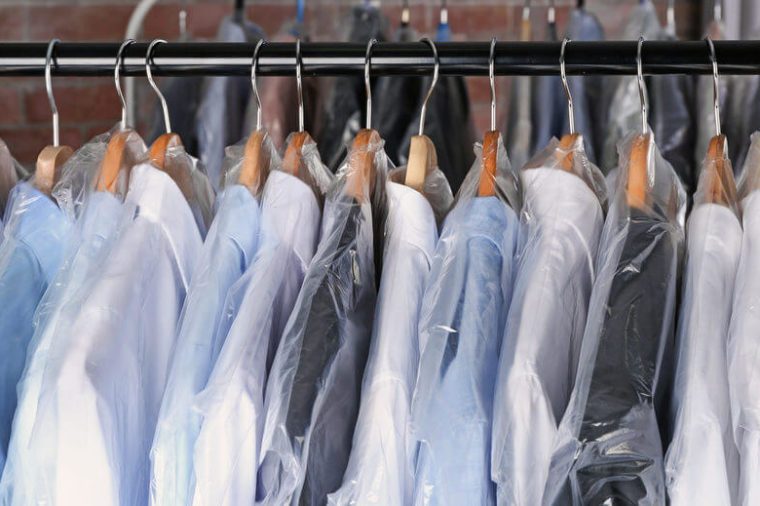 AFRICA STUDIO/SHUTTERSTOCK
AFRICA STUDIO/SHUTTERSTOCK
If your clothing label gives you the option of hand-washing or dry cleaning, choose DIY. A 2011 study found that residues of acarcinogenic VOC called perchloroethylene hang out on dry-cleaned clothes and then release into the air. Wool, polyester, and cotton clothing were particular offenders; silk didn't retain these chemicals.
Candles
 IAN DYBALL/SHUTTERSTOCK
IAN DYBALL/SHUTTERSTOCK
Their divine smell and ambiance are nice, but candles release a lot of trouble. "Candles can be substantial sources of ultra-fine and fine particles that contribute substantially to the exposure to indoor particulate matter, which is associated with inflammation in lungs," says Dr. Colbeck. What's more, scented candles can also emit harmful formaldehyde. If you really like to use candles, look for beeswax or soy options, he says. Read on for more reasons toavoid scented candles.
Air fresheners
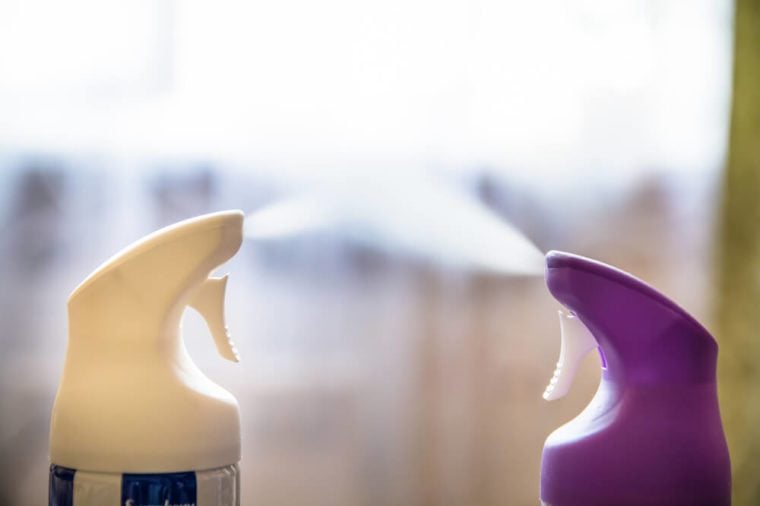 MIKHAIL ROMANOV/SHUTTERSTOCK
MIKHAIL ROMANOV/SHUTTERSTOCK
Some people looking for a pleasant-smelling abode turn to air fresheners. "These can emit over 100 different chemicals; some of these can react to form a new set of pollutants," explains Dr. Colbeck. The cocktail can trigger migraines, asthma attacks, and breathing troubles. To keep air smelling clean, the Environmental Working Group suggests a simple solution: Open a window or run a fan.
Your humidifier
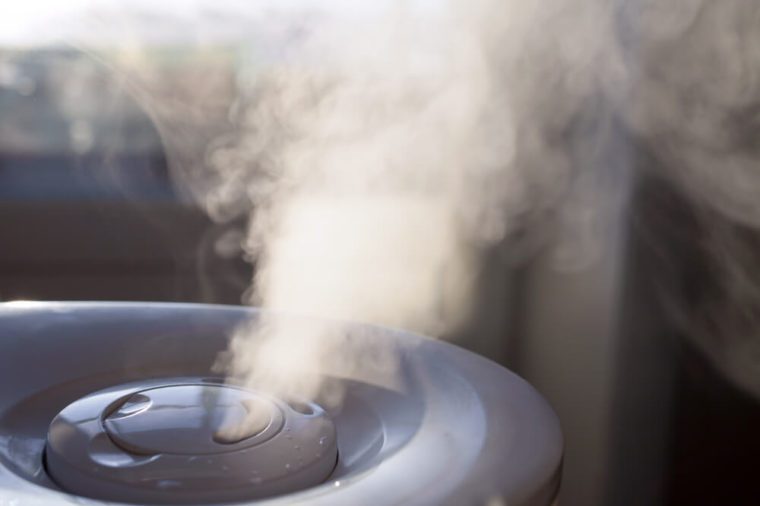 YURY STROYKIN/SHUTTERSTOCK
YURY STROYKIN/SHUTTERSTOCK
To score smooth skin in the winter, you may crank up your humidifier. But keep it below 50 percent humidity, recommends Nolen. Any higher encourages mold formation and dust mites to flourish, two huge sources of indoor allergens that can impact your ability to breathe. Here are 15 ways to decrease indoor allergy triggers in your home. Then read about how to clean your humidifier.
Granite countertops
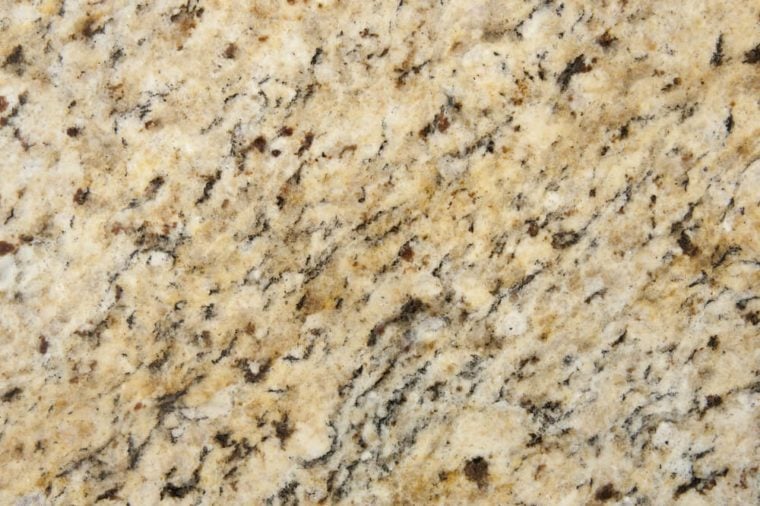 AMBIENT IDEAS/SHUTTERSTOCK
AMBIENT IDEAS/SHUTTERSTOCK
Granite countertops can produce radon, a naturally occurring radioactive gas. Radon is the second leading cause of lung cancer in the United State. But you can breathe easy here: The EPA notes that indoor granite doesn't significantly increase indoor radon. The main source is through cracks in your home, like in walls and the foundation. Rather than replacing your countertop, focus your efforts on plugging up these areas in your home. First, check if your home has radon by ordering a radon test kit. You can also hire a professional to test your house.
Wood-burning fireplaces
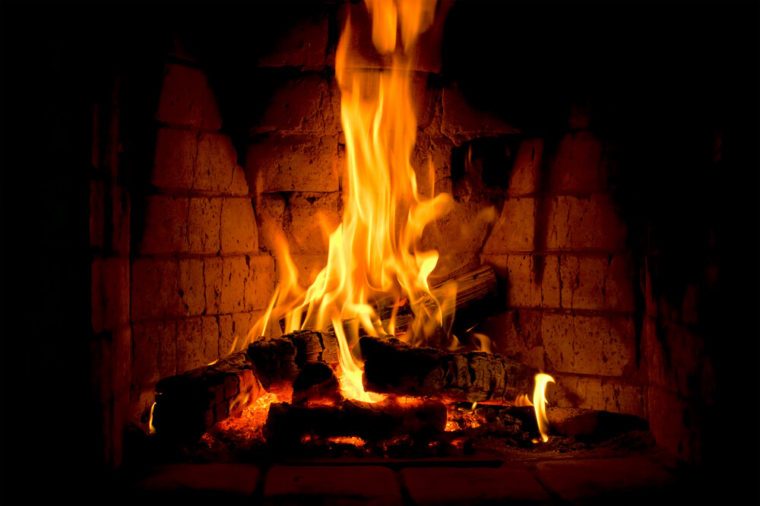 LIVEMAN/SHUTTERSTOCK
LIVEMAN/SHUTTERSTOCK
Lighting a fire in your home may make things cozy, but it can also muck up your air. Burning wood and cleaning up the ash later can create high levels of particulate pollution and carbon monoxide exposure in your home, says Dr. Colbeck. (He notes that the amount depends on factors like the size of the room and how well ventilated it is.) Here are other scary ways your fireplace can be toxic.
Your stove
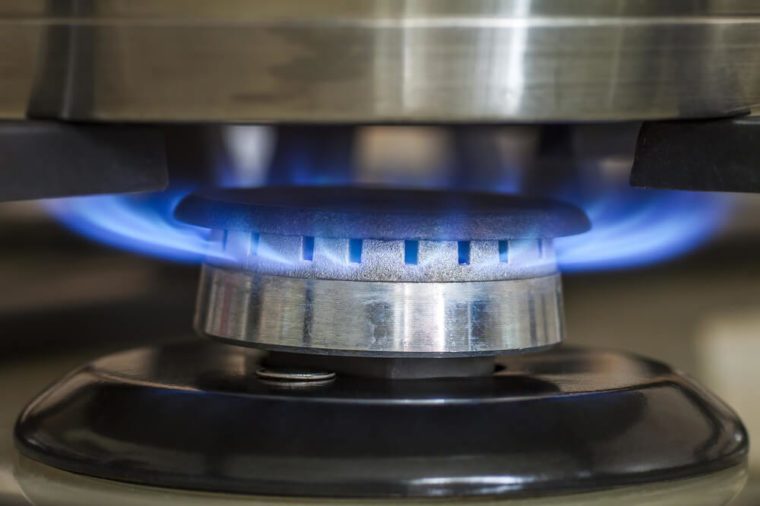 BILANOL/SHUTTERSTOCK
BILANOL/SHUTTERSTOCK
Attention, home chefs: Gas stoves may whip up Pinterest-worthy meals, but the flame creates nitrogen oxide emissions, and cooking itself produces particles, says Nolen. "You're not going to give up cooking, but be sure to use an exhaust to get rid of these things," she says. While the vent above the stove is a good first start, that's usually not enough unless you know it's ventilating the air outside your home. (Some simply move the air to another part of the kitchen, she says). A second option: Crack a window while you cook.
Your air purifier
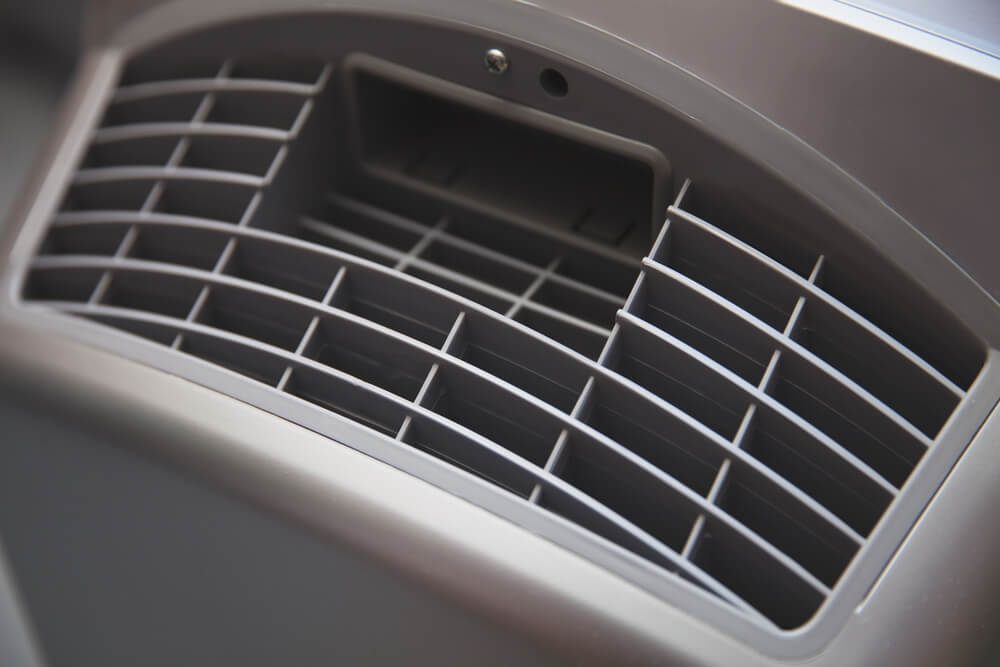 VLADIMIRKARP/SHUTTERSTOCK
VLADIMIRKARP/SHUTTERSTOCK
If you can believe it, some air filtration systems will make your air worse. "Avoid anything that generates ozone, which some are marketed to do," says Nolen. "Indoors, ozone can be harmful to your health," she adds. If you are buying a filtration device, look for a model that has a HEPA filter, she says, although preventing pollutants entirely—skipping the purifier—is your best bet for cleaner air indoors.
You can't get everything out of your home
 ARTAZUM/SHUTTERSTOCK
ARTAZUM/SHUTTERSTOCK
A normal existence leads to an increase in some indoor air pollutants—walking, cleaning, or cooking can all add to the load, says Dr. Colbeck. You can't avoid doing those things, and you shouldn't. Just take a few measures to keep the air inside safer, he recommends: Use a vacuum with a HEPA filter, open windows when you're using pollutant-releasing products, and take your shoes off at the door. Your lungs will thank you.
- লিঙ্ক পান
- X
- ইমেল
- অন্যান্য অ্যাপ

মন্তব্যসমূহ
একটি মন্তব্য পোস্ট করুন